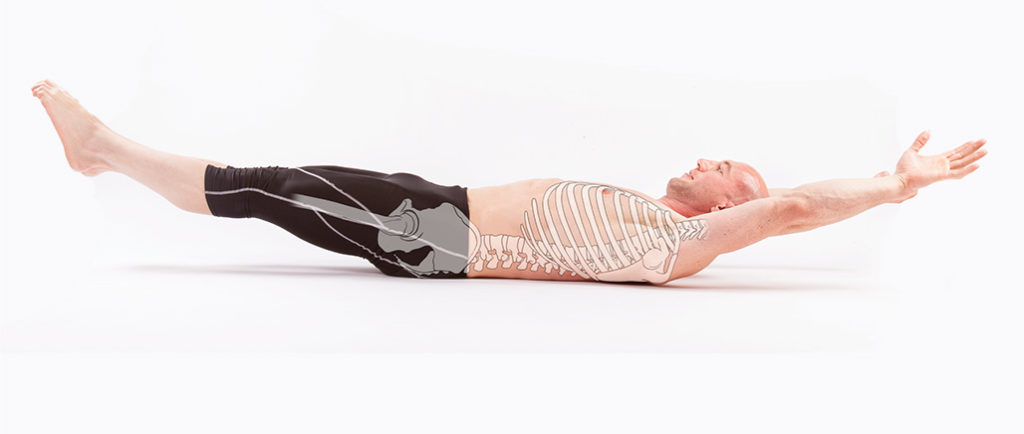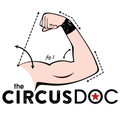
Let’s investigate the reasons behind why the hollow body is so important, when it is most useful, and how it is not always needed, and when to look out for injurious movements.
Who: Most aerial teachers start teaching their beginning students how to hang with “engaged” shoulders and a hollow body in their very first class.
What: A (correct) hollow body position is identified by a slightly flexed (flattened) lower back with the rib cage drawn down which is stabilized with all four of the abdominal muscles.
When (and when not): Hollow body is a great position for those who are not yet strong enough to stabilize their spine in neutral. For many aerialists, this is how they were taught to always move and they will continue to use a hollow body position as a basis of movement. However, advanced aerialists can learn to move beyond the hollow body and create a solid base for movement in a neutral spinal alignment displaying a mastery of core control.
Where: The core, the abdominal canister, the abdominals and friends, whatever you like to call the muscles that make up the whole middle of your body. In a hollow body position it is alive with muscular firing . Aerialists will feel muscular recruitment in their internal and external obliques, transversus abdominus, rectus femoris (the 6-pack muscle), and even through the deep gluteal muscles that make up the pelvic floor.
Why: A hollow body position is a tool to ensure aerialists are engaged through their core and gives them a solid base from which to move their arms and legs. A properly performed hollow body allows an aerialist to more freely move their limbs by ensuring that the spine is stabilized by their core. An improperly performed position may mean that you are either loose all over or endeavoring to use you hip flexors and/or your lats to stabilize your core, and they do not do a very good job of it! In a poorly controlled position when you try to move your arms or legs you will be asking those muscles to do double duty as they try to stabilize the spine while moving the limbs. An imperfect hollow body is a risk for injury or the spine, hip, or shoulder.
How: How to recognize if you are actually using your abdominals and not your hip flexors or lats to create the illusion of a hollow body position. Most commonly you can see that the low back is slightly (or significantly) extended (arched) due to the extra stresses on the spine or that the spine goes into extension when the aerialist begins to move her legs or to press with her arms to invert.

